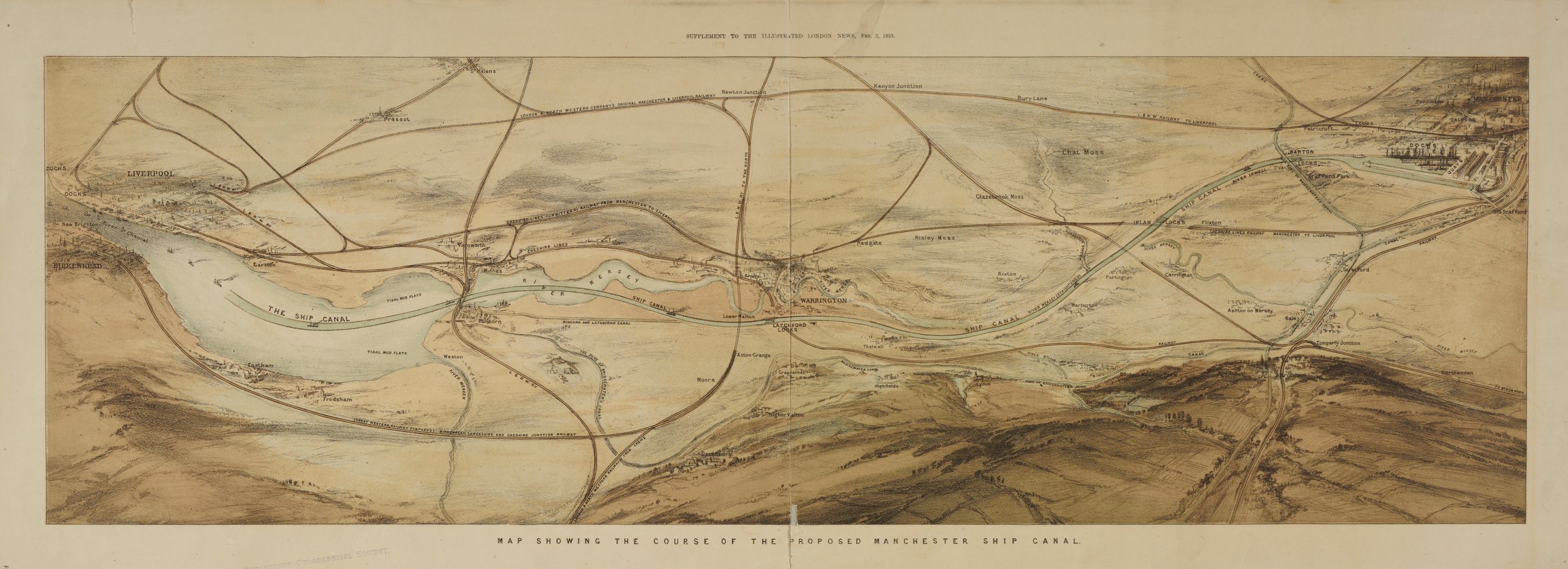1. The Big Idea
Connecting Salford to the Sea
The cotton, silk spinning and weaving industries were flourishing in Salford as the 19th century approached but all-important international trade was becoming increasingly costly. A 36-mile waterway to the Atlantic Ocean was set to change all that…

Map showing the course of the proposed Manchester Ship Canal from a supplement in the Illustrated London.
The industries of Salford and Manchester were booming, transatlantic trade was essential and costs were becoming crippling.
Incredible feats of engineering characterised this period, from steam and rail to mechanised cotton production. But a 36-mile ship canal, linking the landlocked cities of Salford and Manchester to the Atlantic Ocean was a remarkable idea that many believed would never – and could never – happen.
A cartoon in the satirical magazine Punch, by cartoonist & illustrator Edward Linley Sambourne in 7 October 1882, ridiculing the idea that Manchester could become a seaport to rival other major British cities such as Liverpool.
But happen it did, thanks to the ambition and determination of Daniel Adamson.
He oversaw the campaign to get the Manchester Ship Canal Bill through Parliament, resulting in the Manchester Ship Canal Act in 1885.
The idea came about as a way to create a trading route that could bypass the increasing costs of transporting goods by railway and charges at Liverpool Docks. A direct link to the Atlantic.
Portrait of Daniel Adamson
The project took foresight, imagination and ambition, combined with the latest engineering methods to achieve.
The ship canal became the world’s longest canal route, as deep and as wide as the Suez Canal.
By connecting the landlocked heart of industrial northern England to the sea, the Manchester Ship Canal opened the door to the world and secured international trade for Salford and many other northern cities and industries.
Illustration showing the proposed route of the Manchester Ship Canal, created to show how ‘close’ Manchester and Liverpool are.
Manchester Ship Canal amended plan after arrangements with the Trafford Estate, 1890





